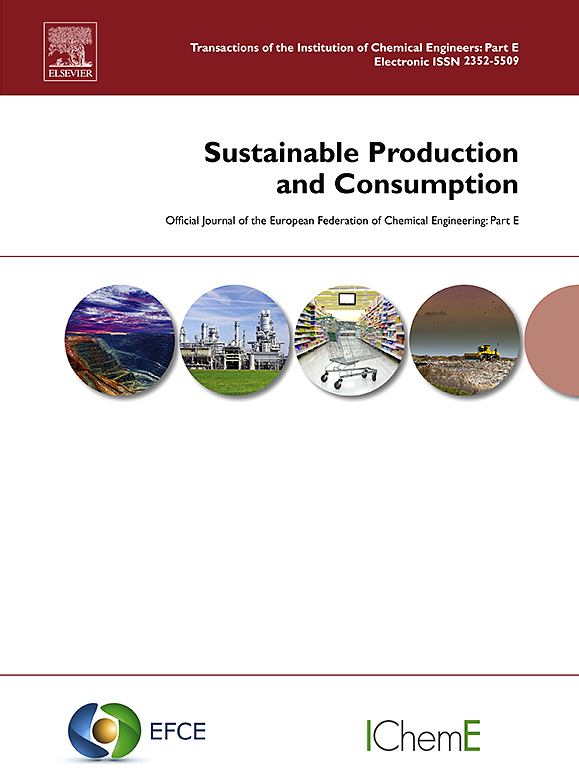Analysis of the environmental impacts generated by an upper limb prosthesis: Design for children, adolescents and adults
IF 9.6
1区 环境科学与生态学
Q1 ENVIRONMENTAL STUDIES
引用次数: 0
Abstract
In the search to improve life quality for people with a limb deficiency, prostheses play an important role in facilitating reintegration into social and working life due to higher health-related quality of life and employment rates reported among upper limb prosthesis users compared to non-users. In this field, introducing 3D printing for their manufacture has brought new proposals regarding cost reduction, better accessibility, and design customization. However, the environmental impacts of producing these devices are still understudied. In this context, this work aims to analyze the environmental impacts of 3D upper limb prostheses through life cycle assessment methodology, analyzing designs for children, adolescents, and adults. This assessment includes from the design stage to assembly with their respective residues. The ReCiPe Midpoint and Endpoint impact categories were assessed, in addition to calculating equivalencies, for a better understanding. Results show that the production of prostheses for children, adolescents, and adults corresponds to DALY, DALY, and DALY, respectively. Regarding the impacts on biodiversity, the production of prostheses for children, adolescents, and adults corresponds to species.yr, species.yr, and species.yr, respectively. Concerning the impacts of natural resources, the production of prostheses for children, adolescents, and adults corresponds to 0.221 USD2013, 0.436 USD2013, and 0.784 USD2013, respectively. Midpoint and Endpoint categories show that, depending on the category, the relevance of the process impact could vary, changing the strategies to seek a lower environmental impact. Furthermore, the impact of the assembly stage also has different configurations depending on the impact category. Furthermore, results show that energy consumption and Polylactic Acid Biopolymer production from raw materials are the resources with the greatest impact on all the designs. Therefore, renewable energy sources and more efficient 3D printers are required to enhance these prostheses’ benefits.
上肢假体对环境的影响分析:儿童、青少年和成人设计
在改善肢体缺陷患者生活质量的研究中,假肢在促进重新融入社会和工作生活方面发挥着重要作用,因为与非使用者相比,上肢假肢使用者的健康相关生活质量和就业率更高。在这一领域,引入3D打印制造带来了关于降低成本、更好的可访问性和设计定制的新建议。然而,生产这些设备对环境的影响仍未得到充分研究。在此背景下,本研究旨在通过生命周期评估方法分析3D上肢假肢对环境的影响,分析儿童、青少年和成人的设计。这种评估包括从设计阶段到装配各自的残留物。为了更好地理解,除了计算等效性之外,还评估了ReCiPe Midpoint和Endpoint影响类别。结果表明,儿童、青少年和成人义肢的生产分别对应2.57×10−5 DALY、5.02×10−5 DALY和9.64×10−5 DALY。关于对生物多样性的影响,为儿童、青少年和成人生产的假肢对应于1.08×10−7种。Yr, 2.79×10−7种。Yr和4.74×10−7种。年,分别。在自然资源影响方面,儿童、青少年和成人义肢的生产分别对应0.221美元2013、0.436美元2013和0.784美元2013。中点和终点类别表明,根据类别的不同,过程影响的相关性可能会有所不同,从而改变策略以寻求较低的环境影响。此外,装配阶段的影响也有不同的配置取决于影响类别。此外,结果表明,能源消耗和原料生产聚乳酸生物聚合物是对所有设计影响最大的资源。因此,需要可再生能源和更高效的3D打印机来提高这些假肢的效益。
本文章由计算机程序翻译,如有差异,请以英文原文为准。
求助全文
约1分钟内获得全文
求助全文
来源期刊

Sustainable Production and Consumption
Environmental Science-Environmental Engineering
CiteScore
17.40
自引率
7.40%
发文量
389
审稿时长
13 days
期刊介绍:
Sustainable production and consumption refers to the production and utilization of goods and services in a way that benefits society, is economically viable, and has minimal environmental impact throughout its entire lifespan. Our journal is dedicated to publishing top-notch interdisciplinary research and practical studies in this emerging field. We take a distinctive approach by examining the interplay between technology, consumption patterns, and policy to identify sustainable solutions for both production and consumption systems.
 求助内容:
求助内容: 应助结果提醒方式:
应助结果提醒方式:


